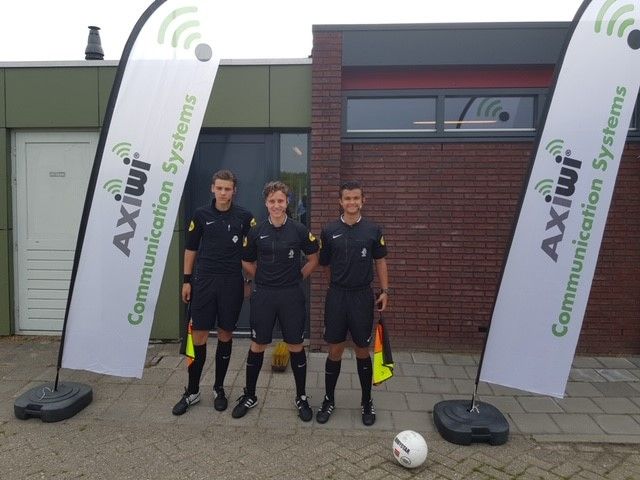Communicate consciously, also non-verbally
This blog is written by soccer referee Max Broekhuizen (middle picture) of REF2REF
We live in a bizarre and unruly time without sports. I hope you, your friends and family are all healthy and well. AXIWI and Ref2Ref will be collaborating with a weekly blog to bring out the best in our community, with tips and tricks to keep us sharp and educated.
Everyone does it! What, you ask? Everyone communicates, all the time, even you while you’re reading this blog. We communicate all day long with everything happening around us. We not only communicate with each other through speech, but also with body language. As a referee you have to deal with communication every time you enter the pitch. Players, coaches, assistant-referees, you communicate with everyone. As a referee myself I notice the difference; the more mad or irritated I feel the harder it gets to get every player to do what I want them to do. When it happens I question myself: why it’s so hard to get everyone on board? Is it something I say, think or radiate?
Tip #1: Be aware of your appearance and how you want to be perceived. Your non-verbal communications should match to your verbal communication.
Your non-verbal communication is the way you communicate through your body, like an angry attitude when a player committed a foul or when you address a players behaviour. Sometimes it’s good to be mad at a player, but how are you being perceived? Players can turn against you in an instant, all because of your non-verbal communication. Most players don’t choose to turn against a referee, it mostly starts because of incomprehension. What you think or feel doesn’t always apply for someone else or can be perceived in another way. A similar situation would be if you give a player a warning and ask him about his weekend, it would be weird.
Tip #2: Notice the troublesome players and dare to talk about it
You can recognize “troublesome” players fairly easy. They complain and are very hard to get on board. They try to disrupt you or try to disrupt the match. How do you deal with these types of players? The answer is simple: Talk to them! Dare to start the conversation with these troublesome players and the outcome can be very positive. When you show your positive intentions, it triggers a positive reaction from the person you’re dealing with. Ask them for example how they’re doing in the competition.
Tip #3: Not talking is also talking
Maybe you recognise this. You decide to give a team a penalty kick, but all the eleven players don’t agree. You give the offender a yellow card and his teammates keep nagging. How do you stop them from nagging about everything? It’s not like you can show four other people a yellow card. Ever thought about not looking at them? Literally turning your back on them. When you don’t look at players you blockade the option to communicate. By turning your back most players will stray of the thought to nag. I use this technique a lot and I promise it works, try it yourself!
Communication in a good manner is really important. Always be open, kind and be polite to everyone on or next to the pitch. Have enough knowledge of the rules, have a great condition and you’re ready to lead the most fun and sporty matches after the corona crisis. Goodluck and hang on!
#Stayfit-and-healthy
Max Broekhuizen
“Haal de beste scheidsrechter in jezelf naar boven!/Bring out the best referee in you”- Ref2Ref



